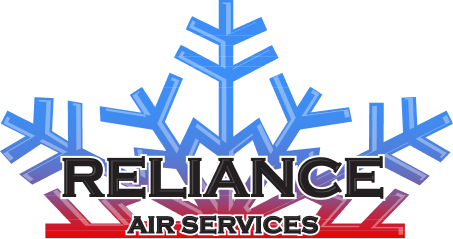Modern HVAC systems are far more complex than many people realize and have numerous components and parts that all work together to cool and heat a building. Understanding all of the different parts of your HVAC system and what role each of them serves can help you troubleshoot certain issues when they arise. It’s also important for ensuring you can properly maintain the system and that you avoid doing anything that could lead to a problem.
AC Condenser
The AC condenser is the unit that sits outside the building. It consists of three main components: the compressor, the condenser fan and the condenser coil. The compressor is essentially the heart of a cooling system, as it’s responsible for pumping refrigerant through the system.
AC systems cool by using refrigerant to capture heat from the air flowing through the indoor part of the system. As the refrigerant absorbs heat, it changes from an extremely cold liquid to a warm liquid. When it flows back outside to the condenser unit, it gets compressed by the compressor. This causes it to instantly boil and change into a superheated gas. It then gets pumped through the condenser coil. The condenser fan continually pulls air into the unit and blows it over the condenser coil. As the refrigerant flows through this coil, the heat it contains naturally flows out into the air as a result of the refrigerant being much hotter than the air.
Air Handler
The air handler is the indoor part of an HVAC system. It contains the blower, which is the technical name for the fan that brings air into the system and circulates the conditioned air around the building. The evaporator coil is also located within the air handler. When the refrigerant gets pumped inside, it first passes through the expansion valve before flowing through the evaporator coil. When the refrigerant expands, it changes back from a warm liquid into an extremely cold liquid. As it then moves through the evaporator coil, it absorbs heat from the air flowing across the coil.
Central HVAC systems have one large air handler. Ductless mini-split systems can have anywhere from one to eight air handlers, each of which contains a blower and an evaporator coil.
Heat Pump
A heat pump condenser is almost exactly the same as an AC condenser, but it has two additional components that allow the system to provide heating in addition to cooling. The reversing valve allows the system to change the direction that the refrigerant flows to switch between cooling and heating modes. There is also a second expansion valve that connects to the outdoor coil. This expansion valve serves the same purpose as the one indoors. The only difference is that it activates when the system is heating to cool the refrigerant before it flows through the outdoor coil. This is so that the system can absorb heat from outside and then release it inside.
Furnace
Most traditional HVAC systems have an AC and a gas or an electric furnace that supplies heating. Electric furnaces are fairly basic and have electric resistance heating elements that heat the air flowing through the furnace.
Gas furnaces have burners that burn natural gas or propane to produce extremely hot combustion fumes. The draft inducer fan draws these fumes through the metal heat exchanger. Heat then continually radiates off the metal, raising the temperature of the air flowing through the furnace by somewhere between 30 and 80 degrees in most cases. When the combustion fumes exit the heat exchanger, they then get vented outside through the exhaust flue or chimney.
Conventional furnaces have just a single heat exchanger. High-efficiency condensing furnaces have two heat exchangers, which is what allows them to work more efficiently and waste less energy.
Modern gas furnaces use one of several types of electric igniters to light the burners. Older furnaces instead have a pilot light, which produces a constant flame that ignites the burners whenever the furnace turns on.
Gas furnaces also have numerous other sensors and safety switches. This includes things like the flame sensor, pressure switch and temperature-limit switch. The flame sensor detects whether the burners are lit, ensuring that gas doesn’t continue to flow if the burners fail to ignite.
The pressure switch detects whether the draft inducer is creating sufficient negative air pressure to ensure that the fumes get vented outside. When it activates, it triggers the gas valve to open so that gas starts flowing to the burners.
The temperature-limit switch measures the temperature inside the furnace and serves several roles. When it detects that the heat exchanger is sufficiently hot after the furnace turns on, it signals the blower to start running. Once the furnace shuts off, the switch signals the blower to shut off once it detects that the heat exchanger has sufficiently cooled off. This switch is also a safety mechanism that will cause the furnace to shut down if it overheats.
Supply and Return Ductwork
The ductwork in a central HVAC system has two separate sides: supply and return. The blower draws air into the system through several large vents, and the air then flows through the return ductwork to the air handler/furnace. Once the air is heated or cooled, it then gets circulated through the supply ducts that connect to the supply vents in every room. Supply ductwork consists of one large duct known as the trunk, which has several smaller branch ducts connected to it that lead to different parts of the building.
Thermostat
The thermostat is essentially an HVAC system’s brain. It works by sensing the temperature of the surrounding air and then signaling the system to turn on and off as needed. You can also use it to control the blower any time you want to have air circulating around your house but don’t need your AC or heat running.
Refrigerant Lines
AC and heat pump systems have two copper lines that run between the evaporator coil and the condenser coil. The larger line is known as the suction line, which transports cool refrigerant from the outdoor unit to the evaporator coil or vice versa when a heat pump is running in heating mode. This line is always fully insulated to prevent the refrigerant from absorbing heat as it flows through the line. The smaller line is known as the liquid line. This is what carries the warm refrigerant back outside or back inside when a heat pump system is heating.
Air Filter
Air filters are an essential component that prevents dust and debris from getting sucked into the air handler/furnace. Most HVAC systems have one air filter located within the return plenum, which is the large box that connects to the bottom of the air handler or furnace. Other systems instead have one air handler located behind the cover of each return air vent. To ensure efficient, effective operation, you need to replace air filters no less than every one to three months.
Contact Us with All Your HVAC Concerns
If you have any questions or concerns about the HVAC system in your home or business, the experts at Reliance Air Services are here for you. We install, repair and service AC systems, heat pumps, furnaces and ductless mini-splits, and our experienced technicians are fully familiar with equipment from every manufacturer. We provide top-notch HVAC maintenance to ensure your system works well for years to come. To schedule a service appointment or consultation in the Sarasota, FL area, contact us today.





